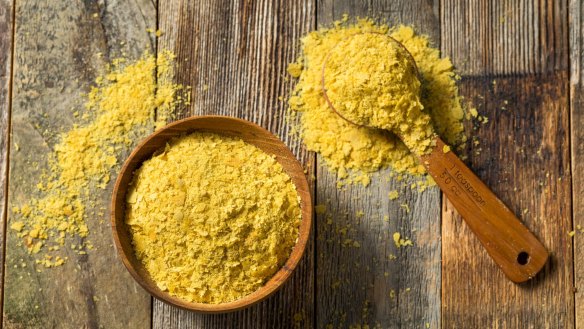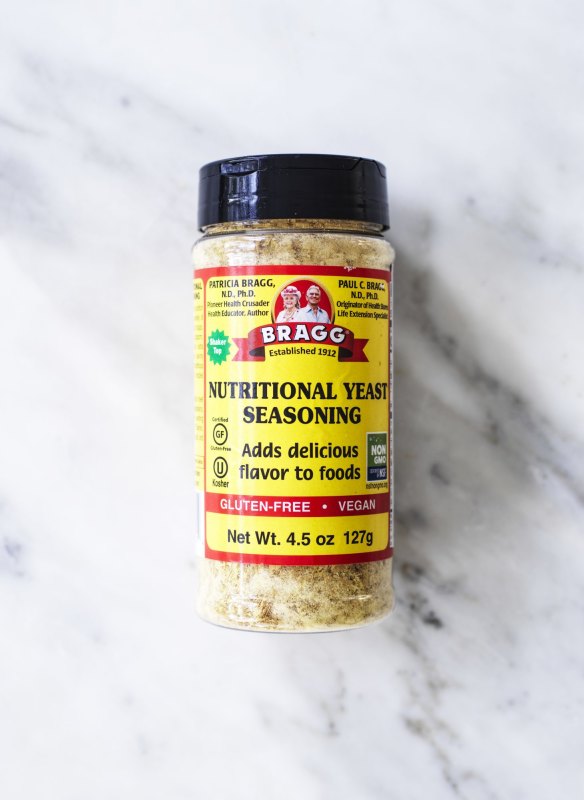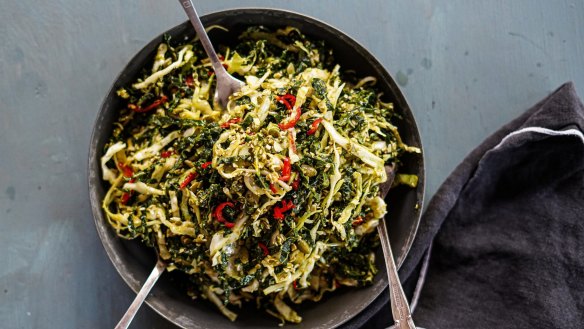Nutritional yeast: Everything you need to know

What is it?
It is dried yeast with a nutty, cheesy flavour. Used extensively in vegan cooking, it is made by growing bakers' yeast in tanks filled with sugary liquid, such as diluted molasses. The yeast is strained then dried to kill the yeast and remove the water. It is then powdered or flaked. Some manufacturers fortify their yeast with extra vitamins.
Known to its proponents as "nooch", nutritional yeast is added to vegan food products such as vegan cheese and vegan sausages. It dates back to the early 1920s, when the rise of store-bought bread caused sales of yeast to drop. Yeast manufacturers started advertising yeast for its nutritional properties.

There are diary records of Royal Air Force and Dutch army prisoners of war held captive by the Japanese in the Indonesian islands growing yeast on their rice rations to treat beriberi (vitamin B1 deficiency). Deactivated yeast was commercialised in the 1950s and was popularised in the 1970s during the hippy revolution.
Why do we love it?
It has been used extensively in vegan cuisine to bring a cheesy, nutty flavour boost to dishes such as pasta and pizza. It is also popular with people who have dairy allergies.
With its long list of amino acids, many of which are essential – meaning the human body can't synthesise them – it can help people who eschew meat gain a balanced diet. Most importantly, nutritional yeast has a high proportion of amino acids, including glutamic acid, which acts as a natural flavour-enhancer.
Who uses it?
"It is vegan gold dust," says Shannon Martinez from Melbourne vegan eatery Smith & Daughters. "Nooch has an incredible savoury element. We use it in our bechamel, and in cheese and cauliflower pie, where it works with the mustard in the sauce."
Before the development of great vegan cheeses, nutritional yeast was sprinkled on pasta as a substitute for parmesan, but is being superseded by more naturally fermented products like koji (fermented rice) and fermented tofu.
Chef and nutritionist Sam Gowing from Byron Bay Cooking School says: "My students often crave a meaty, umami flavour and are happily surprised that nutritional yeast fulfils their quest."
She suggests whisking through eggs before cooking for breakfast, sprinkling over pasta or using in sauces and dressings to add a delicious kick to vegetable dishes. It is also an essential ingredient in her rich, savoury Black Betty Bam, a plant-based umami-rich spread.

How do you use it?
- Enrich your roast potatoes by par-boiling them, sprinkling with a few teaspoons of nooch, coating in extra virgin olive oil and roasting as usual.
- Add it to bechamel when making lasagne to give a rich flavour and texture.
- Use it where you would use a stock cube in gravies, sauces and soups.
- Try a nutty coleslaw with a rich dressing made of nutritional yeast.
- Mix it with extra virgin olive oil and a little salt and spread over fresh popcorn.
- Blend fresh peas and broad beans with oil and fine breadcrumbs with a little salt, oil and nutritional yeast to make a delicious dip.
Where do you get it?
Made in the United States, Bragg nutritional yeast is a favourite with vegans and is available at Coles supermarkets and health food stores. Woolworths carries its own Macro brand while The Source Bulk Foods stocks nutty toasted nooch flakes.
Suggest an ingredient via email to brainfood@richardcornish.com.au or tweet to @foodcornish.
Appears in these collections
- More:
- Food
- Brain food
From our partners
Original URL: https://www.theage.com.au/goodfood/nutritional-yeast-everything-you-need-to-know-20210928-h1yuuf.html
